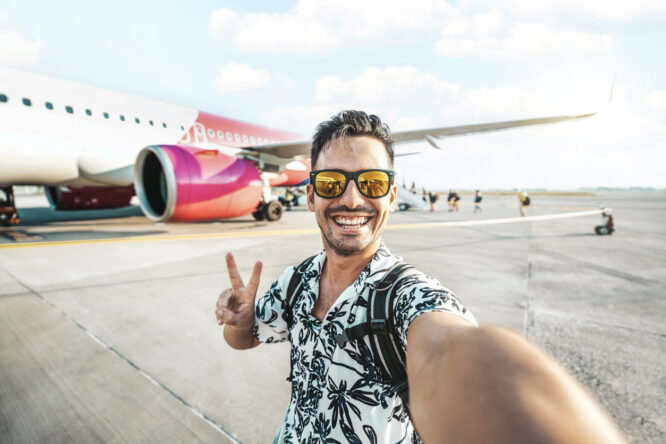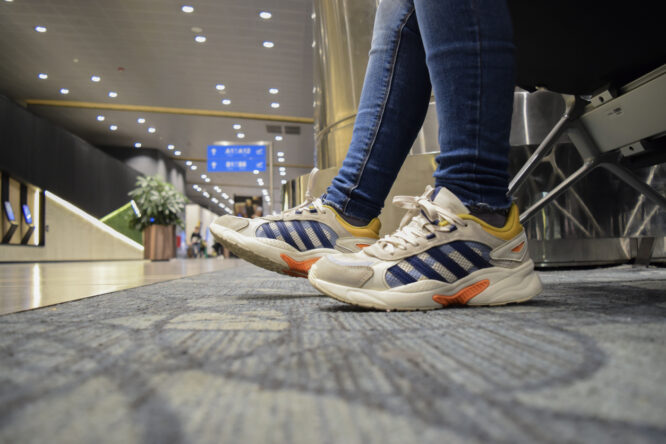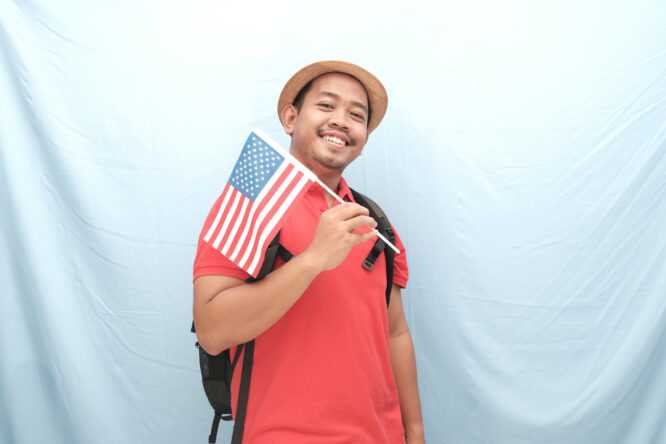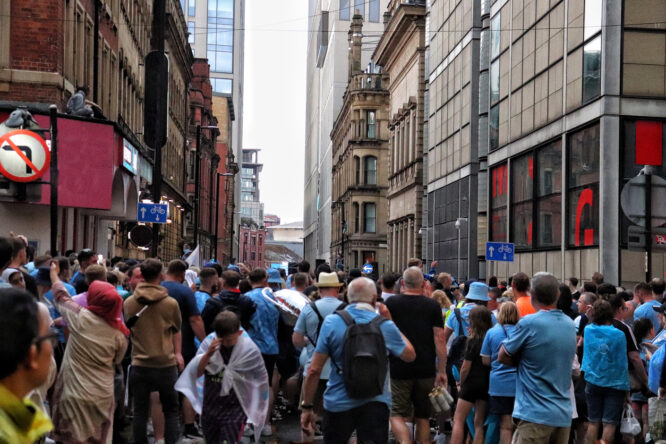It doesn’t matter how hard they try to blend in—the minute an American steps off the plane, locals in other countries can usually spot them a mile away.

It’s not always a bad thing, but it’s definitely a thing. They’re one of the easiest groups of people to identify, no matter where they are in the world, largely because of how they speak, carry themselves, and interact with everyone around them. Here are some subtle clues that instantly give someone from the US away when they land somewhere new.
1. The sneakers are doing a lot of the talking.

Comfort first, style second—it’s kind of the American way. Big, cushioned sneakers (especially super athletic ones) are a dead giveaway. In a lot of countries, people save their sporty trainers for the gym, not for sightseeing or dinner out. Locals often clock the giant Nikes or Asics before they even hear the accent. It’s not a crime, obviously, but if they’re trying to blend in, swapping for a more subtle shoe can make a surprisingly big difference.
2. They’re way louder than everyone else.

It’s not intentional, of course. Americans are just used to talking at a volume that feels normal back home. However, in a lot of places, especially Europe and parts of Asia, the general vibe is much quieter, especially in public spaces. Group laughter, animated story-telling, even casual chatting tends to turn heads abroad. It’s not about being rude; it’s just that the local “indoor voice” setting is usually dialled way lower.
3. They smile at strangers like it’s second nature.

Americans are famously friendly, and smiling at strangers is super normal at home. But in a lot of other countries, flashing a big grin at random people can come off as weird, suspicious, or just way too familiar. Locals tend to pick up on that wide, open friendliness right away. It’s not necessarily unwelcome, it’s just super obvious you’re not from around there when you’re handing out smiles like free samples.
4. The clothes are super casual, even when they’re “dressed up.”

Jeans, T-shirts, hoodies—Americans love casual comfort, and they don’t always switch gears even when visiting places where people dress up more for everyday life. A “fancy” outfit that still looks relaxed is a dead giveaway. In a lot of cities, locals tend to dress a little sharper, even just to run errands. So when someone shows up at a nice restaurant in sneakers and a hoodie, the locals pretty much know what’s up.
5. They always ask for “free refills” without realising it’s not a thing.

In the US, bottomless coffee and endless soda refills are a standard perk. Abroad? Not so much. Asking for a refill (or looking genuinely confused when it doesn’t happen) is one of those tiny clues that you just stepped off an American flight. It’s not rude to ask, but it does instantly mark you as someone who’s used to way bigger drinks and way more topping-up than most countries are ready to offer without another charge.
6. They tip like they’re still in the States.

Americans are conditioned to tip big, often 20% or more, because servers back home rely on it. Of course, in a lot of other places, tipping isn’t expected (or is much smaller), and tossing big tips around can feel a little out of sync with local customs. It’s a generous habit, for sure, but locals—and especially waitstaff—usually clock Americans fast when they start handing out tips that are way above what anyone else would leave.
7. They really seem to struggle with coins and small change.

Most Americans don’t use coins for much back home beyond the occasional parking meter. So when they land somewhere where small change actually matters, like Europe or Japan, you can often spot them fumbling awkwardly at the register. Locals usually handle coins effortlessly, but tourists visibly struggling to tell apart tiny bits of currency while holding up the line? Yeah, they know you’re not from around here.
8. They demand ice like it’s a basic human right.

Ice in drinks is basically a sacred American tradition. Abroad, though? Not always a thing, and definitely not in giant overflowing cups. Asking for a glass full of ice, or looking disappointed when drinks arrive at room temp, is a classic giveaway. Locals are used to drinks with just a few cubes (if any), so when someone makes a big deal out of it, it’s pretty clear they’re not from around the neighbourhood.
9. They speak super casually to authority figures.

In the US, it’s pretty normal to joke around a little with cops, security guards, or border agents. Abroad? Not so much. In a lot of countries, authority figures are treated with a lot more formality and respect—no small talk, no jokes. Americans trying to be friendly in a casual way can sometimes come off as inappropriate or even disrespectful without meaning to. Locals (and definitely officials) pick up on the vibe immediately.
10. They say “awesome” and “amazing” about literally everything.

Americans love a good superlative, and they’re not shy about using them for the smallest things. “The sandwich was AMAZING,” “That museum was AWESOME,” “This bus ride is INCREDIBLE”—it’s just part of the culture. Other cultures tend to be a little more low-key with their adjectives. Hearing everything described like it’s life-changing is a quick clue that someone grew up on a heavy diet of enthusiastic American energy.
11. They move through crowds like they own the place.

Americans are used to big spaces, wide pavements, and personal bubbles. In tight city streets or crowded markets abroad, they often move too fast, take up more space, or seem a little oblivious to the unspoken flow of foot traffic. Locals who grew up weaving through crowds know how to read the room—slow down when needed, tuck in tight, let other people pass. Tourists who barrel forward like it’s a shopping mall? Easy to spot.
12. They talk about money out loud.

It’s pretty normal in the States to talk casually about what things cost, whether something’s “cheap” or “expensive,” or even mention salaries in certain circles. In a lot of places, though, talking about money out loud is seen as super tacky or rude. Locals definitely notice when someone’s casually chatting about prices in public. It’s not usually a huge offence, but it does scream “not from here” pretty quickly.
13. They’re super impatient with “slow” service.

In the US, speedy service is almost a badge of honour. Abroad, meals (and service in general) are often slower on purpose. It’s about enjoying the experience, not rushing through it. Americans getting visibly impatient when a server doesn’t bring the check right away? Classic move.
Locals notice the restless shifting, the glancing around, the “where ARE they?” energy. In a lot of places, you have to ask for the bill, and even then, it’s normal to linger a bit. Rushing through a meal is a telltale sign you just got off an American flight.




